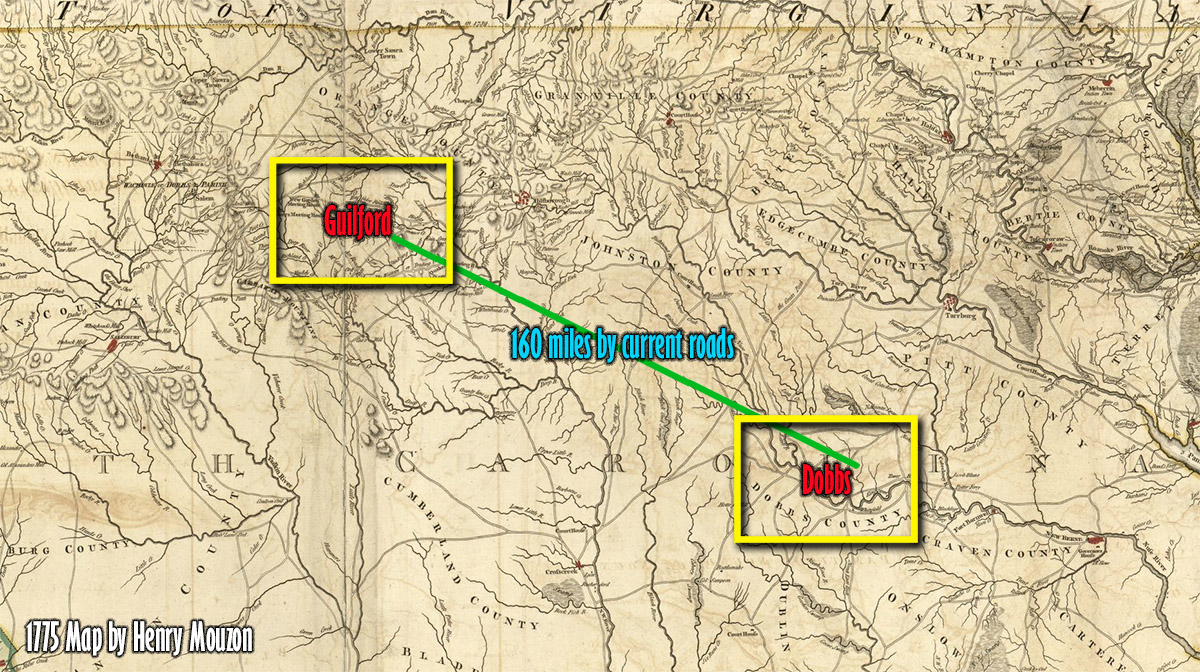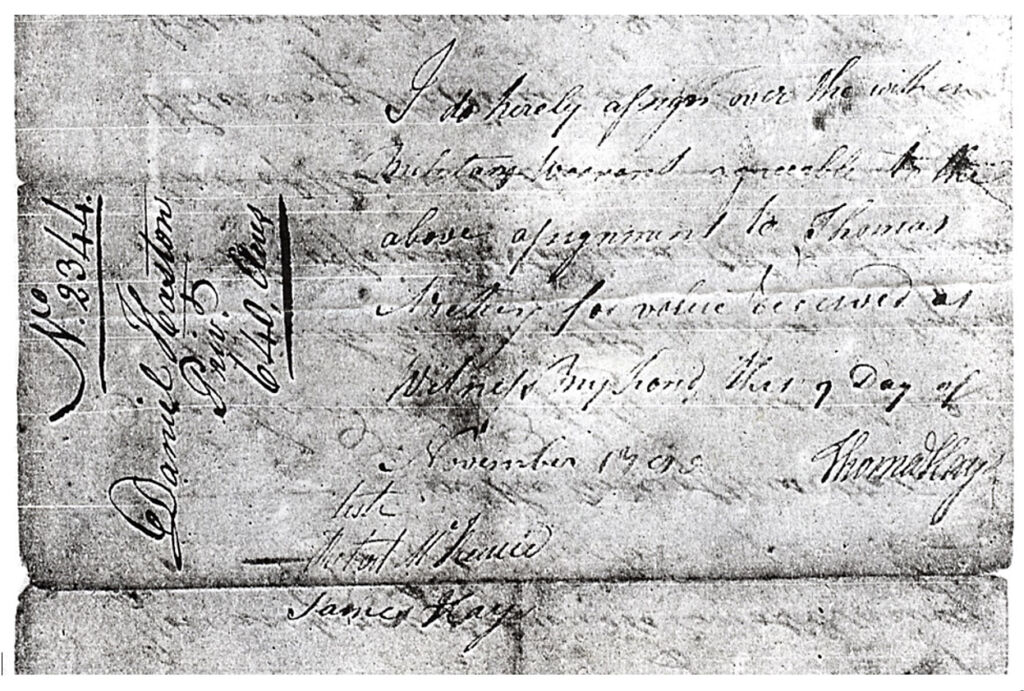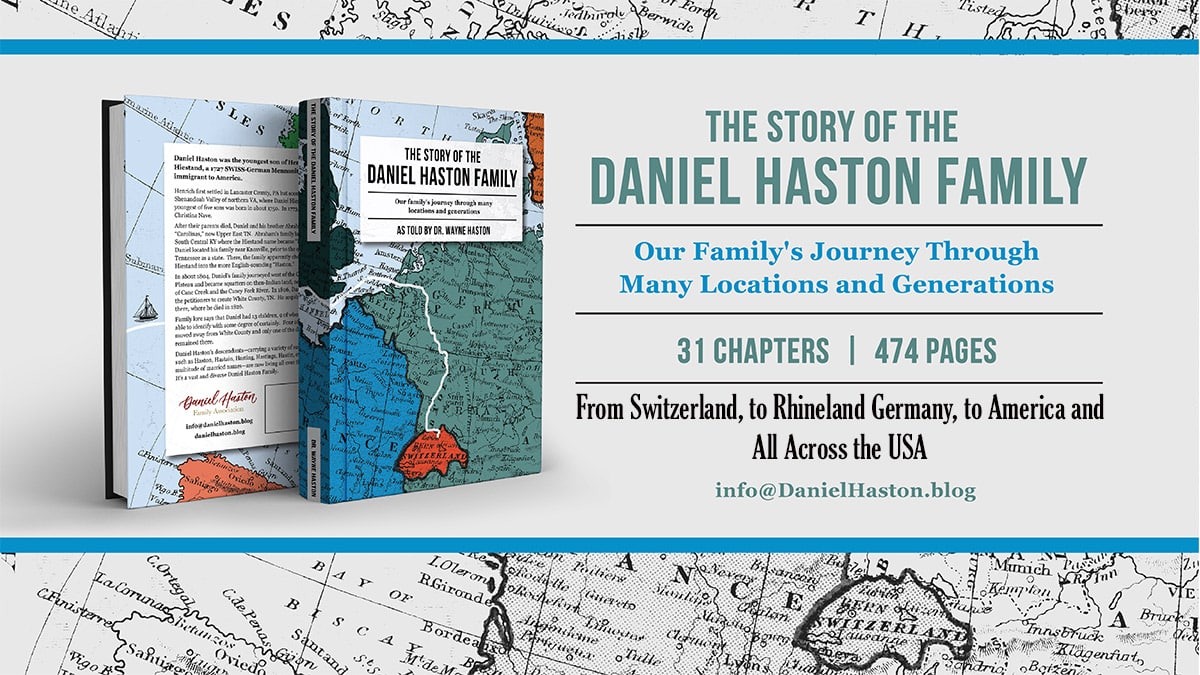17a - The "Guilford County Four"
And the Epicenter of 1785 Land Fraud - James Glasgow's "Fairfield" Plantation

This is #2 in a sequence of 3 articles. You should read the first article before reading this one.
The Epicenter of Revolutionary War Land Fraud

A good man turned bad. How many times have we heard stories such as this? Because of his heroic service in the Revolutionary War, James Glasgow was elected as the first Secretary of State in North Carolina in 1777. He served in that position for more than 20 years, until it was discovered that he and his cronies were using their positions and political powers to defraud hundreds (perhaps thousands) of Revolutionary War veterans. And the State of North Carolina was robbed of hundreds of thousands of acres and millions of dollars through corrupt assignments of Revolutionary War bounty land grants. Eventually, Glasgow was convicted in the Glasgow Land Fraud Case.
In 1765, James Glasgow acquired a plantation on Contentnea Creek known as “Fairfield” as a gift from his father-in-law. The Fairfield Plantation, located in what was then Dobbs County, NC, became a hub of Glasgow’s illegal assignments of Revolutionary War military bounty-land survey warrants.
Warrant #2344 Connections in Guilford County, NC
Four men whose names appear on the backside of the “Daniel Haston” military bounty land document (Survey Warrant #2344) were known to be residents of Guilford County, North Carolina—Thomas Hays, James Hays, Robert McKemie, and Thomas Archer. This is the original record of Thomas Hays transferring Warrant #2344 to Thomas Archer, with Robert McKemie and James Hays as witnesses.

I call them the “Guilford County Four.”
I conducted extensive research trying to find some kind of connection between our Daniel Haston and any one of these four men. But I found no evidence that would suggest our Daniel was in any way connected to one or more of them.
Thomas Hays
The “Daniel Haston” warrant for survey #2344 was issued on September 29, 1785 by Willoughby Williams and was assigned to Thomas Hays the following day, September 30, 1785. Ostensibly, “Daniel Haston” transferred the rights for 640 acres of military bounty land to Thomas Hays.
From studying the North Carolina military bounty land records, it appears that Thomas Hays was a small-scale speculator in the military land grants. In addition to the rights to the two warrants he purchased and transferred to Thomas Archer, it seems that he purchased and kept the rights for 640-acre tracts from the heir of Abraham Henderson, the heir of Micajah Smith, and from Joshua Murry.
On August 20, 1792 Hays sold 150 acres on the waters of Haw River,[i] and died in that same year. Even though Thomas Hays was involved in purchasing and selling rights to land in the Military Reservation in north central Tennessee, he continued to live in Guilford County and died there.
[i] Pruitt, Abstracts of Deeds – Guilford County, NC, Books 3, 4, 5, & 6, [page] 163.
I asked Dr. A.B. Pruitt as to whether or not it was likely that Thomas Hays was aware that the “Daniel Haston” warrant might be fraudulent. Dr. Pruitt responded: “Thomas Hays probably didn’t worry if his actions were legal or not. Most people involved in Tennessee land were busy doing their own thing, and they didn’t know details about what others were doing, but they did know some folks were obtaining more land than they had.”[i]
[i] Pruitt, email to Wayne Haston, March 8, 2019.
Who is Dr. A.B. Pruitt?
Dr. Albert Bruce Pruitt is the most prolific producer of historical resources on North Carolina and Tennessee of our generation. He is probably THE leading authority on the Glasgow Land Frauds–the fraudulent activity by some of North Carolina’s leaders of the late 1780s and early 1790s to enrich themselves by making false claims regarding military bounty land warrants for thousands of acres in upper Middle Tennessee (the Military Reservation).
I did not find any court records or other documents that would indicate that Thomas Hays was (or was not), in general, an unscrupulous man.
James Hays
Robert McKemie and James Hays were the two witnesses to the assignment of warrant #2344 from “Daniel Haston” to Thomas Hays. Both were closely related to Thomas Hays and both lived in Guilford County. According to a court record for an administration of the estate of Thomas Hays in 1792, James Hays, Sr. was a brother of Thomas Hays.
In May of 1786, James Hays (Sr.) was found guilty by a jury in an assault case (The State vs. James Hays) and fined by the court.[i] In those days, assault cases often were for relatively minor offenses, but we have no details regarding this case. In 1792, James Hays was living on the land of “Thomas, Deceased.” Was this James, Sr. or James, Jr.?
[i] Greensboro Public Library, “Guilford Court Records, 1781-1790,” Colonial Court Records of Guilford County, accessed March 17, 2019, https://library.greensboro-nc.gov/home/showdocument?id=5580, original page 205.
Robert McKemie
Robert McKemie* was born in Philadelphia and christened in a Presbyterian Church. He was a Justice of the Peace as early as 1776 in Guilford County and continued in that office for more than twenty years.[i] He owned land adjacent to James Hays on the waters of the Haw River,[ii] but purchased a lot in the village of Martinsville, where the Guilford County Courthouse was located from 1774 to 1808. It appears that his Justice of the Peace district was the area of Guilford County north of the Haw River. Robert’s sister, Elizabeth, married James Hays on November 26, 1776, so James Hays and the Justice of Peace for his area were brothers-in-law. But on February 20, 1795, Robert McKemie was a plaintiff in the case, Robert McKemie vs. John and James Hays.[iii]
[i] Fred Hughes, Guilford County, NC – A Map Supplement. (Jamestown, NC: The Custom House, 1988), 122.
[ii] Guilford County Deed Book 1, 511, 512.
[iii] Guilford County Deed Book 2, 293.
Suspicious Scenarios
There were some very suspicious circumstances surrounding the #2344 “Daniel Haston” military land warrant. In addition to what was presented in the earlier chapter, consider this set of scenarios:
- On September 29, 1785, on behalf of “Daniel Haston,” William Faircloth received warrant #2344 from Willoughby Williams (Deputy Secretary of State) at Secretary of State James Glasgow’s “Fairfield” plantation. Faircloth then supposedly gave the warrant to “Daniel Haston,” the supposed rightful owner who transferred it to Thomas Hays.
- James Glasgow (ca. 1735-1819), born in Maryland, in 1765 acquired a plantation on Contentnea Creek (northeast of Kinston, NC) known as “Fairfield” as a gift from his father-in-law. Fairfield, Glasgow’s plantation, was in the old (now non-existent) Dobbs County.
- Where Faircloth received the warrant for “Daniel Haston” on September 29 was approximately 160 miles from (south east of) where Thomas Hays lived in Guilford County.
- The warrant was (allegedly) assigned by “Daniel Haston” to Thomas Hays on September 30, just one day after Faircloth received it at Glasgow’s plantation in then-Dobbs County.
- Did Faircloth carry the warrant from Dobbs County to Guilford County in one day in order to deliver it to “Daniel Haston,” who assigned it to Thomas Hays on the same day? Or were “Daniel Haston” and Thomas Hays both at the Fairfield plantation where Faircloth received it from Willoughby Williams and handed it over to “Daniel Haston,” who assigned it to Thomas Hays at that place?
- If Thomas Hays and “Daniel Haston” were in Dobbs County where the warrant was received by Faircloth and assigned by “Haston” to Hays, then James Hays and Robert McKemie must have also been there with them in order to witness the transfer.
Obviously, no one traveled 160 miles in one day at that time. The hypothetical scenario of “Daniel Haston,” Thomas Hays, James Hays, and Robert McKemie all being in Dobbs County at the same time would have been possible, but only if “all of the planets lined up” perfectly.
Thomas Archer - What about him?
Although not a part of the original “Guilford County Three,” Thomas Archer became involved later. Archer, also a Guilford County, NC citizen, was the man who ended up with Warrant #2343 and the land in Middle Tennessee that went with it. IF Thomas Hays, James Hays, and Robert McKemie were knowingly involved in any wrongdoings in the “Daniel Haston” Warrant #2344, Thomas Archer was far enough removed from the original transfer from “Daniel Haston” to Thomas Hays that he may not have known anything about what happened at the Fairfield Plantation.
Thomas Hays was such a colorful person that I’ve just got to tell you more about him!
If you appreciated this article, please share it with others who might also enjoy it.


One thought on “17a – The “Guilford County Four” and Rev War Land Grant Proceedings at Fairfield Plantation”
Wayne Haston
Thank you for making yourself available for dialogue in these matters of family heritage and U.S. history.
Like so many others, we admire your very thorough analysis to present colonial history in such detail.
My name is Andy Hays and I am trying to determine if the James Hays of this article could be my great, great, great
grandfather. Born in Henry County Indiana, I can link by records there to a John Hays as a great, great grandtahter. We now are trying to link John to this James through the 1790 census and that a son of John’s was born in Guilford County, following which they bought land in Henry County Indiana. We make that link through your article and links that put John Hays in Guilford County in the same period as a James.
We are confounded, however, by references in your article to a probate matter cited that show James Hays as a senior, i.e., James Hays, Sr.
In no records we have found is there other references to James Sr., and if there was a senior, we can find no James
Hays Jr. According to the records we have found a James Hays had four children three daughters and a son, John, our link, but no listing of James.
Could there be more than one James Hays in Guilford County in 1725-1800?
If you please, what is our best source in the Giuilford County written and recorded lore to search out how many James Hays Sr. and Jr. there were there in the 1780s and 1790s, and to clarify who their children were?